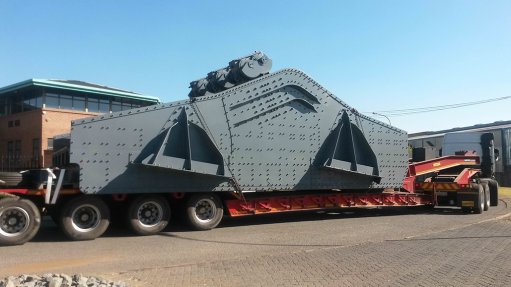
A Kwatani scalper screen being transported for use in the iron ore sector
With mines moving towards the use of single large scalping screens instead of modular configurations, the need to extend the life of screen panels has become even more important.
When one large scalping screen is used between primary and secondary crushers, instead of multiple smaller screens, any downtime in a single-line stream would require a mine to store several hours of production.
“The message from these mines is clear: the longer the scalper can run between maintenance interventions, the better,” says Kwatani COO Kenny Mayhew-Ridgers.
The company has developed larger screens that use rubber or polyurethane screen panels, instead of the wire mesh screening media used in smaller screens. Although these panels present less open area, they deliver important advantages. “Our research and development efforts, together with extensive testing in the field, have allowed us to extend the life of screen panels from eight weeks to over six months,” explains Mayhew-Ridgers.
“Key to the success of our design is our integrated approach – which matches the panel design with that of the scalping screen itself,” he says. “This allows us to achieve a balance between screening area, aperture layout and screen panel life – a result based on a sound understanding of screen dynamics.”
Whereas wire mesh undergoes rapid wear from abrasive materials, the rubber or polyurethane panels are said to be more wear resistant and deliver longer life. The panels require gentler declines for effective stratification, with the most important feature being the stiffness of the screen bed.
Polyurethane panels, while strong and lightweight, have screening apertures that tend to be too stiff for heavy-duty scalping applications, which can lead to blinding. Rubber has been found to overcome this problem, delivering improved wear life.
Kwatani has also developed a panel replacement system with a fastening mechanism on the underframe, that is designed to improve safety and save time.